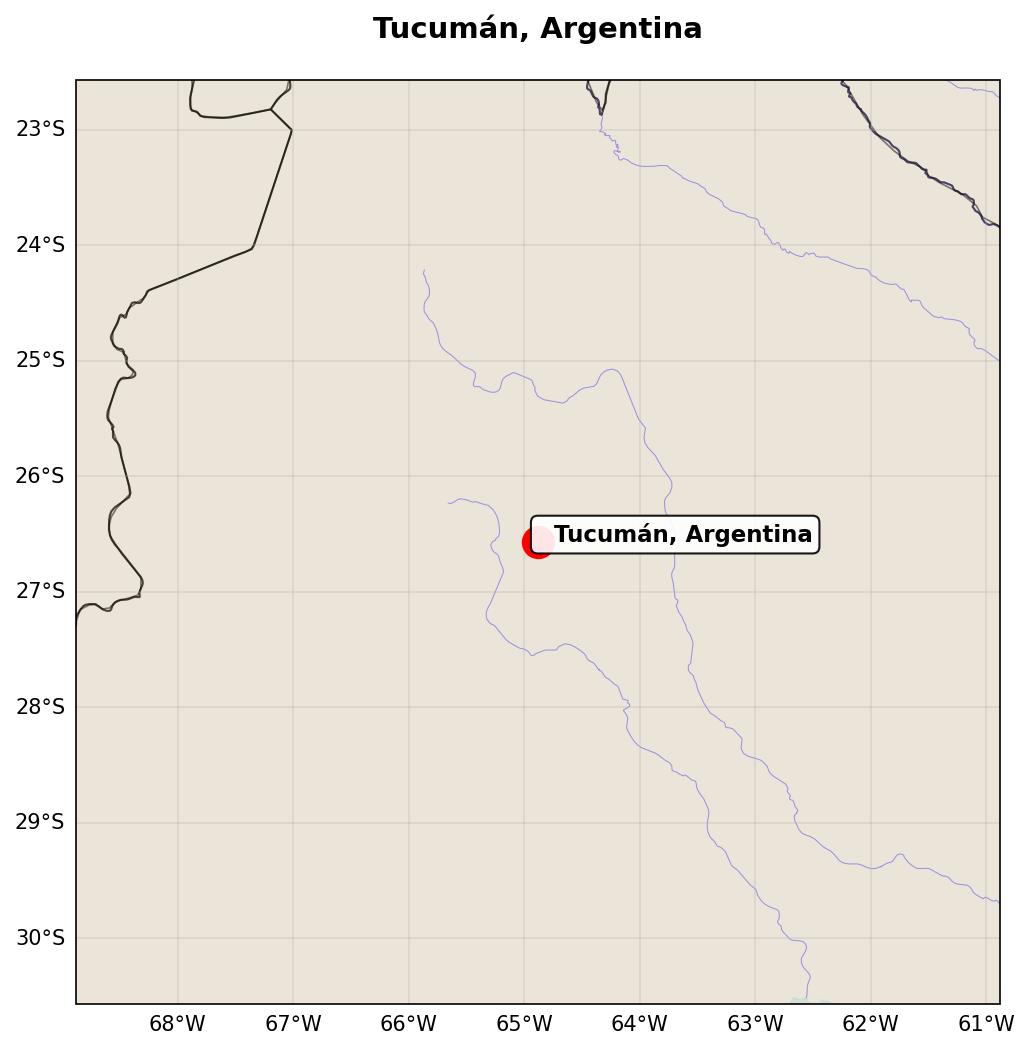Signature Tucumán Wine Styles & Grape Varieties
- Malbec: Deep color with ripe cherry and blackberry flavors; fine tannins and spicy notes, often with hints of cinnamon or clove from aging.
- Cabernet Sauvignon: Full-bodied with blackcurrant and plum flavors; firm tannins and sometimes vanilla or toast from American oak barrels.
- Cabernet Franc: Adds aromatic lift and peppery spice, often used in blends.
- Torrontés (Riojano): Intense aroma with jasmine, citrus, and stone fruit; usually stainless steel fermented for freshness.
- Other Varieties: Merlot, Syrah, Tannat, Sauvignon Blanc, Chardonnay, and native criolla vines add diversity, contributing to light, bright wines.
Most wines are fruit-forward varietals or hearty blends like Malbec–Cabernet, known for dark fruit flavors, smooth tannins, and lively acidity, while whites focus on aromatic clarity.
Terroir of Tucumán
The high-altitude vineyards of Tucumán, located in the dramatic Calchaquí range, are set between 1,000 and 3,000 meters above sea level. These vineyards enjoy a dry, continental climate, with scorching summer days and brisk nights, essential for crafting wines with vibrant acidity and complex aromas. Receiving less than 200 mm of rainfall annually, irrigation using Andean snowmelt is vital to support vine growth.
The region's soils are predominantly sandy-loam with gravel and cobbles, providing excellent drainage and limiting vine vigor, which enhances berry concentration. The intense UV radiation at these elevations thickens grape skins, enriching color and tannins, perfect for bold red varietals like Malbec and Cabernet Sauvignon. Constant valley breezes further aid by keeping the vines disease-free, helping in the production of robust reds and aromatic whites from this unique terroir.
Notable Wineries in Tucumán
Tucumán, a gem in Argentina’s northwest, is home to a collection of remarkable wineries, each contributing to the region's rich viticultural tapestry.
Among these, Las Arcas de Tolombón stands out with its Ishanka vineyard, crafting vibrant wines like Malbec and Torrontés from its highland estate. Bodega Comunitaria Los Amaichas showcases community spirit, focusing on traditional methods through its Sumak Kawsay label.
Luna de Cuarzo – Bodega Biológica offers a unique organic and biodynamic approach, producing minimally handled wines. Chico Zossi is a pioneer, known for high-altitude Malbecs and blends. Meanwhile, Finca Albarossa combines agritourism with premium wine production.
These wineries, along with others like Altos La Ciénaga and Río de Arena, craft wines that express the rugged beauty and rich history of Tucumán, offering visitors a truly immersive wine experience.
Sustainable Winemaking in Tucumán
Tucumán, a small yet vibrant wine region in Argentina, is steadily embracing sustainable practices to preserve its rich viticultural heritage. Many vineyards prioritize organic farming, utilizing minimal synthetic inputs and relying on natural compost. Small producers often adopt low-intervention techniques in both the field and cellar, aligning with the Pachamama philosophy that emphasizes harmony with nature.
Biodynamic practices are gaining traction, with some growers using lunar calendars and planting aromatic herbs to enhance vineyard biodiversity. Drip irrigation, sourced from Andean snowmelt, is managed carefully to conserve water. To reduce energy use, many cellars employ passive cooling methods and limit oak aging. Regional wine events frequently spotlight these sustainable efforts, fostering a culture of conservation and respect for the land. Together, these initiatives ensure that Tucumán’s wines remain as expressive and unique as the land they come from.
Wine Tourism in Tucumán
Tucumán, a rising star in Argentina’s wine scene, offers unique wine tourism experiences focused on high-altitude viticulture.
The High-Altitude Wine Route takes visitors through breathtaking landscapes, with stops at renowned wineries like Los Amaichas and Luna de Cuarzo, where tastings and tours reveal the region’s rich winemaking traditions.
Complementing wine exploration, the area is home to cultural landmarks such as the Ruins of Quilmes and vibrant festivals like the August Homenaje a la Pachamama.
Culinary pairings play a central role, with local specialties like Tucumán empanadas enhancing the tasting experience.
Wine enthusiasts can also enjoy activities like horseback riding, while road improvements ensure seamless travel between destinations.
With its commitment to sustainable practices and diverse wine offerings, Tucumán provides an immersive journey into Argentina’s viticultural heritage.


